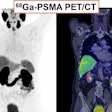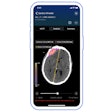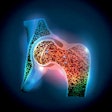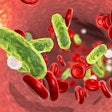Using a flat contact shield during imaging of the adult male pelvis can result in statistically significant radiation dose reduction to the testes, according to a new study in Radiologic Technology (November/December 2016, Vol. 88:2, pp. 127-134).
Lead author Terri Fauber from Virginia Commonwealth University found a 36.4% increase in exposure to the testes when no contact shield was used during pelvic imaging. The routine practice of shielding adult male gonads during radiographic imaging of the pelvis should be a best practice for all radiographers, the researchers concluded.
Fauber and colleagues used a male anthropomorphic phantom equipped with holes for placement of thermoluminescent dosimeters (TLDs) to correspond to the testes. A flat contact shield was used to shield the phantom's testes. Ten exposures were made of the pelvis with and without shielding. The exposed TLDs were then analyzed for radiation exposure with and without shielding.
The end results show shielding does decrease radiation dose, despite other scientific literature dictating otherwise, Fauber said.



















